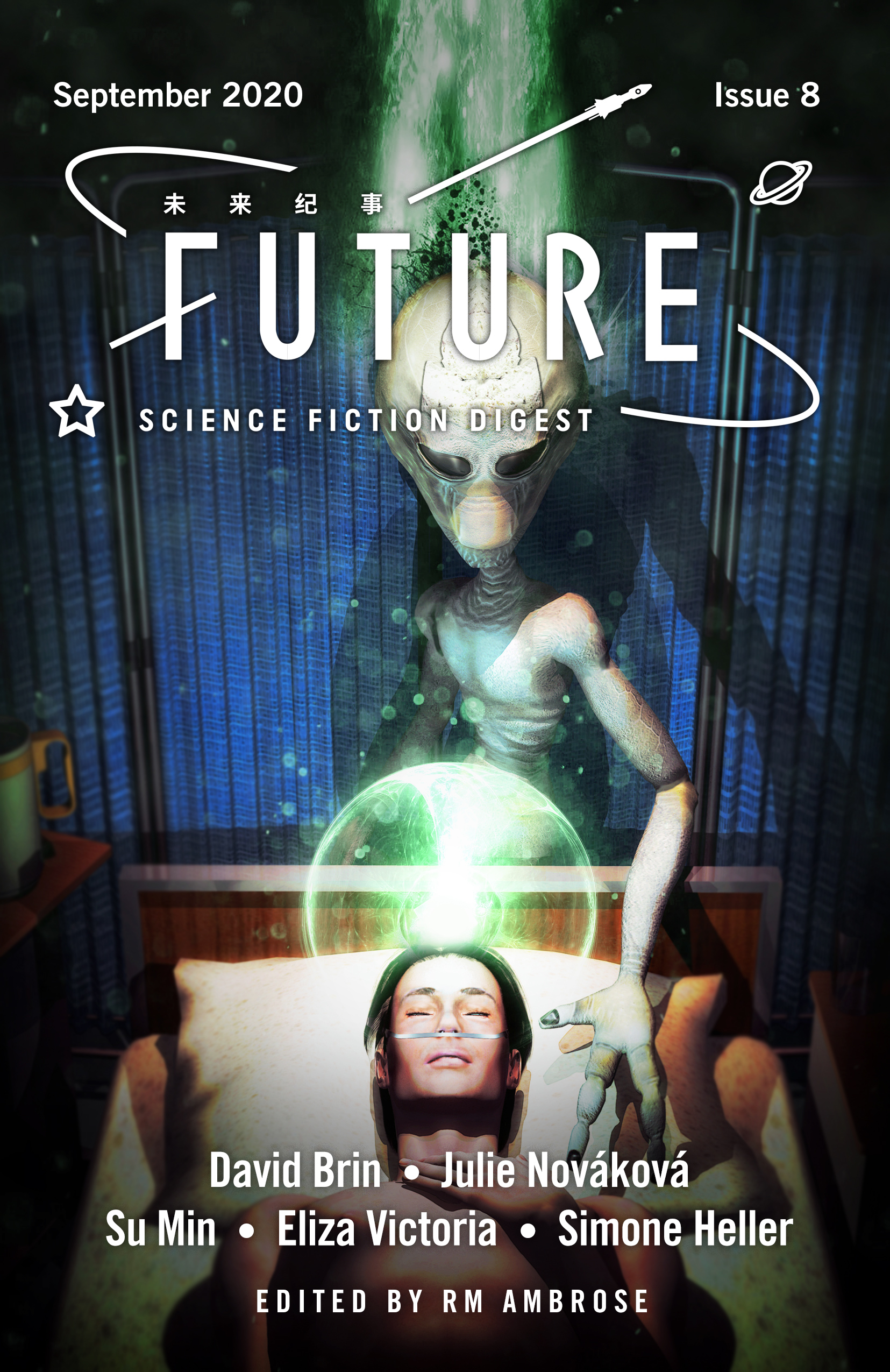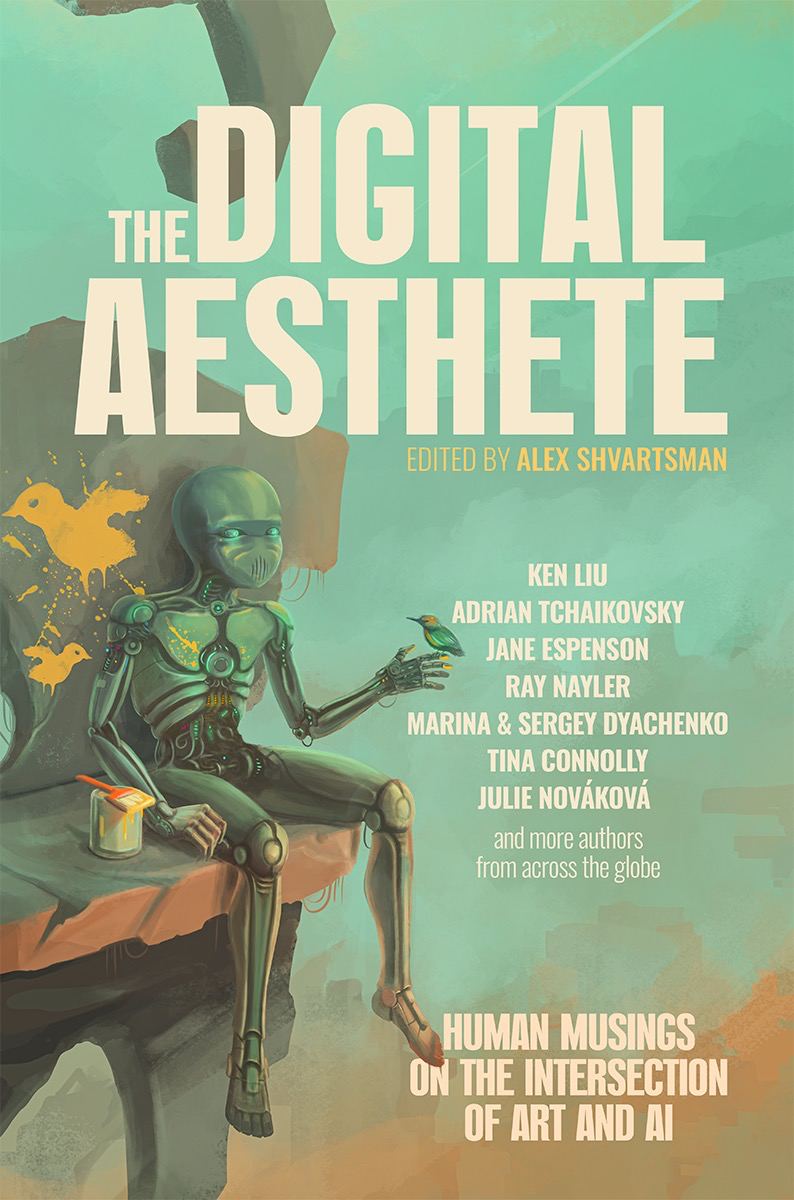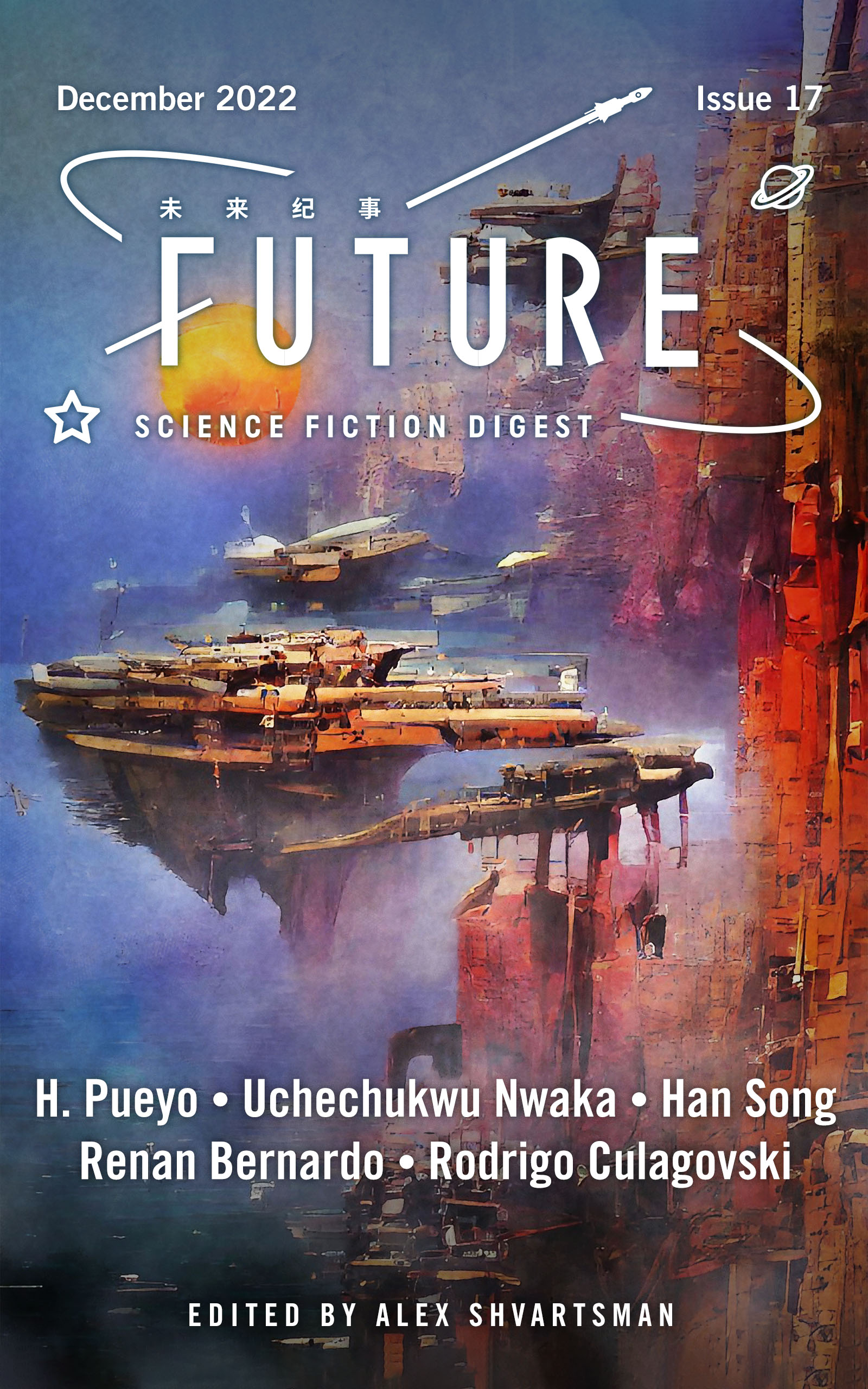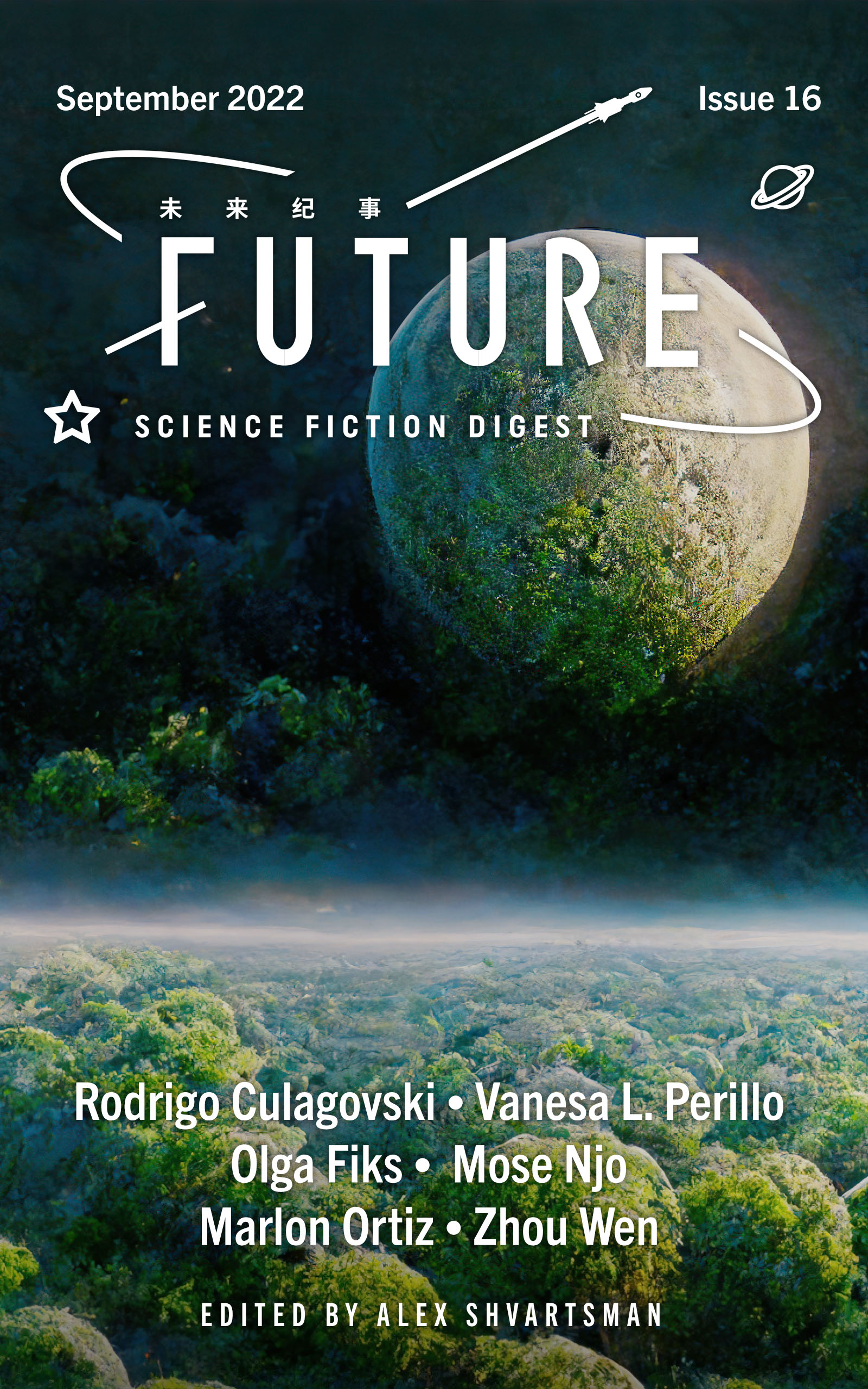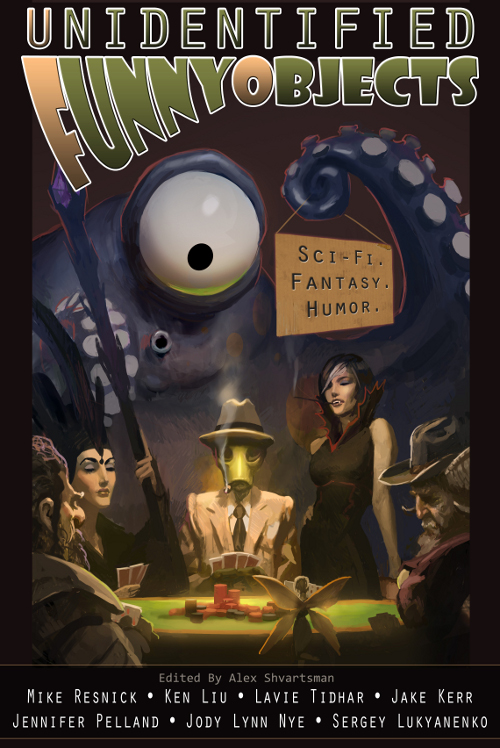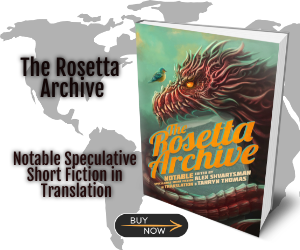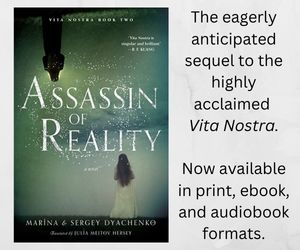“Is our baby going to be okay?”
The tiny human being was almost lost under the monitors and cannulas fastened to her reddened skin with hypoallergenic adhesive tape. One tube went into the mouth, another into the nose. Was she going to be okay?
Doctor Sengupta knew to expect the question, but that didn’t make the answer any less obscure. There was little she could tell the concerned parents with certainty—likelihoods, confidence intervals, margins of error. On a population level, she could say what the probable outcome would be. On a case-by-case basis, who knew?
“Her condition is not immediately life-threatening, and we’ll do everything we can to make her better. We’ll keep you updated,” she assured them the only way she could and tried to avoid their desperate, pleading gazes. She could see they were still worried, but what could she do other than advise them to discuss everything with the base’s therapist?
You should work on your bedside manner, Newton chastised her.
Shut up, she thought. You’re here to analyze, so help me analyze and leave these comments for yourself. They’re only part of your damned sim personality anyway. For all I care, they should have left you more machine-like.
The facts: Nathalie Charbon was six days old. She was also number two second-generation Martian, preceded by her cousin Marc by less than a week. She was also sick, having developed symptoms consistent with the onset of necrotizing enterocolitis, or NEC—in short, as Dr. Sengupta explained to Louis and Amélie Charbon, dying of the bowel. There were traces of blood in her stool, which had barely had time to change from meconium to actual feces. She was lethargic to the extent that she could barely be woken up for feeding and couldn’t suckle. She’d lost more than the usual ten percent of birth weight and had barely gained any so far. The ultrasound showed signs of abdominal distention.
A mild stage of NEC was the likeliest verdict, and Dr. Sengupta wasted no time treating the symptoms. What puzzled her, though, was the underlying cause. Nathalie wasn’t premature. She hadn’t asphyxiated during birth and wasn’t born with any heart disease. She’d been breastfed, or at any rate fed breastmilk from a syringe when she couldn’t feed herself. There were none of the typically described risk factors. She’d been born a healthy full term infant, her weight slightly above average.
With all probability, introducing intravenous feeding, biopatches and tailored antibiotics, monitoring the infant and keeping her hydrated and warm would within a week or so decrease the symptoms enough to resume feeding her small, increasing doses of probiotics-laced breastmilk.
Still, it was a puzzle, and Dr. Sengupta did not like unresolved puzzles.
Strange buzzing woke her up, and she felt disoriented before a voice in her head said: There’s another one.
The doctor on call and the nurses had already placed the ailing infant in an incubator under monitoring. Dr. Möller turned to her, relieved. “Glad you’re here. I’ve taken blood and stool samples, come look at them. I’m afraid we’ll need a biopsy.”
“Sono?”
“Doesn’t look too good, but take a look yourself. Do we prepare an X-ray?”
Sengupta stared at the newborn boy with a sense of unpleasant déjà vu. Nathalie Charbon lay in her incubator just a few meters away, and now Marc Durand was almost as covered in tubes, tape and monitors as she was. He was slightly bigger and heavier, but otherwise the sight was almost the same. Sengupta turned her gaze to the smart display on the incubator. It showed images and basic analyses of the samples. Blood in the stool: check. Inflammation metabolites: check. Sono: slightly distended bowel.
She drew in a sharp breath. This was no accident. NEC had been rare enough as it was. Even in prematures, its incidence had declined rapidly over the 21st century thanks to more effective prevention and care. In full term infants, it was almost unheard of… and now, within a few days, they’d got two with all the initial symptoms.
“Infectious outbreak? Or family?” she muttered under her breath. So far, there was no clear infectious agent suspect. She needed to have a good look at the possible contributing genetic factors. Marc was Nathalie’s second cousin. It would make sense. Or something in their shared environment… but that was pretty much identical for everyone in the settlement.
“The parents,” Möller said quietly, and at first she thought he was about to add something to her remark. Only then she followed his gaze and saw the worried-looking couple standing in the corner.
“Right,” she nodded. Names and occupations?
Paula and Robert Durand. Life support engineer and atmospheric physicist, Newton supplied. I’m surprised you don’t already know from the broadcasts. They’ve just had the first second-generation Martian! They’re in the spotlight.
Sengupta didn’t bother to answer that. She didn’t care much for gossip stories, and this, in her opinion, fell under that label.
Once she greeted the Durands, she began asking about their son. Paula Durand frowned a little. “We’ve already told Dr. Möller everything.”
“Tell me again. When did you first notice something was amiss?”
“He was sleepier in the last two, maybe three days, and when he woke up, he cried. Nursing and carrying him didn’t help very much.”
“We started worrying that maybe he was in pain for some reason, and then we checked his stool and it looked like it contained blood…” her husband supplied. Sengupta remembered that he studied atmospheric escape and the resulting isotopic fractionation on Mars.
“So we hurried right here.” Paula Durand looked up to her, nervously tugging at the zipper of her jacket. “Is he going to be okay?”
That question again.
“We’ll do everything we can for him,” Sengupta assured them with the traditional sentence she loathed. “He’s stable now.”
“Can… can we stay?”
“For as long as you’d like. No one is going to try to separate you from your child. But no drinks, food… you know. You can also watch him anytime on camera.”
She then explained the need to do a biopsy, as noninvasive as possible. A tiny remote-controlled probe could be sent through the nasogastric tube to do in situ imaging and take samples from selected portions of the gut. “We’ll have them in a few minutes’ time.”
There was so much hope in the Durands’ eyes.
Yet the samples confirmed the diagnosis: initial stage of NEC. There was necrotic tissue in the colon. A very preliminary PCR and metabolite analysis showed an almost certain dysbiosis, imbalance of the microbial community in the gut. Pathogen species couldn’t be held at bay by the usual community of mutualist and commensal microbes, and these even seemed to behave harmfully.
So: intravenous nutrition, biopatches, selected antibiotics and probiotics, constant monitoring…
Yet that was only treating the symptoms.
With no immediate procedures at hand, Sengupta sat in her office, the breathtaking view of the Martian sunrise above the eastern rim of the Perepelkin Crater before her eyes. There was work to do.
You should eat something, Newton reminded her. Your blood sugar is low.
Oh, sod off.
But she still chewed a few dried dates before taking her eyes off the scenery behind her window and diving in. Closing her eyes she increased the bandwidth, plunging into the abyssal depths of big data.
Genetics; epigenetics; proteomics; microbiome; growth; psychomotor development; grades; psychological evaluations; medical history… The data on first-generation Martians such as Louis and Amélie or Paula and Robert was extensive. Each of the babies born on Mars was under close observation; most Earthers could only dream of such scrutiny, or dread it. Every aspect of their condition was recorded in fine detail, almost day by day.
No human could effectively sift through data so big. That was where Newton came in: it did her bidding so that she wouldn’t have to construct models manually; it sifted out patterns, looked up data and visualized it in ways a human could comprehend. The AIsistant consisted of multiple interconnected neural networks of varying architecture, loosely akin to regions of the brain. Generalized visual processing, statistical analysis, medical pattern matching… and last but not least of all, the human behavior recognition and mimicking to ease communication, which Sengupta felt ambivalent about.
Now was the time to set any doubts aside and let the thing work. She had Newton scrape every hygiene report from portions of the settlement where the Charbons and Durands had spent the most time recently, cross-correlate the parents’ medical histories and pregnancy outcomes and compare them to the rest of the local population, start searching for any potentially responsible genes, genetic interactions or epigenetic modifications, and analyze their microbiome development. On a sample this size, any nontrivial genetic effects would be next to impossible to discern—but on the other hand, she didn’t need significant p values and good confidence intervals. She only needed an inkling to pursue.
Point one: shared environment. Both regular and more detailed swipes revealed nothing out of the ordinary anywhere… Her gaze flew across the charts. Mother’s food or medicine intake: nothing…
Sengupta moved elsewhere in the endless and yet spaceless virtual landscape. Where she needed an inkling, she couldn’t find any. Genetics provided no useful clues, and thorough epigenetic data required more information than they had. She finally resurfaced with a budding headache and cramps in her stomach suggesting that eating a handful of dates after a night spent half-awake wasn’t enough. With a sigh, she went to the nearest cafeteria.
It was abuzz with people at this hour, just before the main shift and start of school. Looking at the people chatting above breakfast plates, coffee and juice, Sengupta still felt amazement at the existence of this place—not the cafeteria, but what it symbolized. The whole settlement—the fact that there were now enough people on Mars to warrant schools, shops and entertainment. The fact that they could sit and chat here without any regard for physical distance, which would be frowned upon in most places on Earth. For many, the habitat symbolized paradise. And yet, Sengupta had a conflicted view of it. True, she’d come here herself, she saw the appeal of living offworld—but at the same time, she was painfully aware that they weren’t, and for a long time wouldn’t be, a self-sufficient settlement. They depended on Earth, and yet the very existence and prosperity of the settlement made increasingly more Earthers think that they didn’t actually need the Earth. As if everyone could just resettle on Mars or elsewhere. It was preposterous. They didn’t see the supply rockets and all the effort channeled just into making this place survivable. There were cafeterias, a hall for theatre and cinema, schools—but all of it under thick layers of regolith for radiation protection, equipped with multiple filters and checkpoints to ensure breathable atmosphere.
All of that enabled people to live here… and now, the first two second-generation Martians were seriously ill, and she didn’t know why.
No radiation protection in the world would help them if the cases continued.
Marc Durand was slowly improving. Sengupta was relieved. But the state of Nathalie Charbon worried her. The baby girl was getting sicker. Sengupta decided to talk to the parents.
“We may need to begin printing an implant,” she went directly to the matter.
The Charbons visibly paled. “But… that takes weeks to do properly—” Amélie Charbon begun. She had dark circles under her eyes. She and Louis both spent most of their time close to their daughter, but were unable to hold her due to the monitors and controlled environment inside her incubator.
“It does. However, unless we can halt and reverse the damage, your daughter might not have any other option. We should start now, while we have some time.”
Some time. Less than a week, Sengupta guessed, unless something changed for better or worse. Barely enough time to cultivate the cell layers, not speaking of testing the replacement organ. Even weeks were on the optimistic side. But if it came to a choice between almost certain death and using a fast-grown implant…
The next two days went in a haze. Sengupta spent nearly all of her waking time in the infirmary and lab. New biopatches to mitigate the risk of bowel perforation. Increased probiotic doses. Tailored IV and enzyme cocktails to keep the rest of the body as close to healthy as possible. Meanwhile, the tiny human being slept through almost all of it. When she briefly opened her eyes once, the parents wept.
Nathalie’s state wasn’t improving. It was declining much more slowly than Sengupta had feared, though. There was still time.
The third day, the necrosis spread to nearly half as much tissue as before. 1 p.m. blood check showed that blood gases and platelet count had gotten worse, too.
Newton whispered the chances in her mind, and they did not look good. Still, they changed the IV again. Administered more healing patches through the tube.
4 p.m. sono showed signs of free air in the abdominal cavity. A probe quickly confirmed the diagnosis: intestinal perforation.
Sengupta felt her heart racing. The implant—if they only had maybe one more day…
We don’t, Newton said.
You need not remind me.
The incubator was moved to the operating room while she readied herself. In the corner of her eye, she glimpsed the Charbons behind a glass wall in the adjacent room. Without a further glance there, she put on her VR goggles and haptic gloves. The operating robot’s limbs didn’t mimic human hands, of course, but its data was translated into human-comprehensible feedback through her AIsistant Newton. Beside her, Jürgen Möller was putting on his goggles to assist if needed.
The anesthesiologist on call, with the assistance of his AIsistant and Newton, administered the anesthetic. Sengupta made the incision. Removed the gangrenous gut, while Möller assisted in cleaning the cavity. Did the ostomy and closed the incision.
Hoped for the best.
Möller spoke to the parents after the surgery, for which she was grateful. Albeit tired, she could handle immersing herself in monitoring the patient, but not talking to people.
For a few hours, everything was stable. Sengupta allowed herself to hope it would stay that way. Right now, most of Nathalie Charbon’s colon was gone, but that wasn’t too much of a problem if she got into a state ready for another surgery and could receive the organ bioprinted from her own stem cells.
Möller was replaced by the regular shift doctor. She was considering going to sleep, too. A sleep-deprived doctor was a dangerous doctor.
Then the girl’s blood sugar and lactate increased, and her blood pressure started dropping. Heart rate spiked.
Sengupta was on her feet before she could even think. Sepsis? Change IV, add more antibiotics, increase oxygen, grow blood cultures to make the ATBs more targeted… She moved with the precision of a machine, her and Newton’s insight in perfect sync. Dr. Kuang appeared by her side, and without exchanging a single spoken word, each got on with the steps to assess the baby girl’s state. Their AIsistants conversed across a broadened bandwidth, and each task—cultivate several blood samples aerobically and anaerobically, meanwhile do the PCR, increase cardiovascular system monitoring, do a new sono—felt as if all four, the two humans and two AIs, were a single entity with two pairs of hands and feet, and enough computing power to simulate the likely outcomes.
They were not looking good. Early signs of pulmonary edema and kidney failure…
More patches, more IVs, more monitors.
Need to put her on assisted ventilation, the entity thought as one as Charbon’s breathing became more rapid and intermittent.
Kuang’s hands prepared the neonatal ventilator, while Sengupta began disconnecting the cannulas. Wireless monitors still fed them data on the newborn girl.
Before she could be placed in the ventilator, the monitors sent an alert: The baby had ceased breathing. Less than twenty seconds later, the heart stopped, too.
2:03 a.m. station time, Nathalie Charbon passed.
Try to revive. Once clearly over, check and double-check everything. Speak to the parents—this time, she wouldn’t let anyone else do it. Retreat into the office. Write the report. Then…
Meera Sengupta avoided going to her cabin for as long as she could, but eventually, there was nothing else to keep her away from the fine mist they called a shower here, and her bed. She went through the mist. Put on her pajamas. Dimmed the lights. Turned on music for sleep, and abruptly turned it off.
Sat on the couch in the semi-dark cabin, arms wrapped around her knees, her jaw clenched. Stared onto the blank wall.
A voice she could do without spoke: Not your fault.
She gritted her teeth. I know.
Just thought I should remind you. I understand why you’re upset, though.
Oh, do you? Sengupta imagined the intertwined neural networks busy at parsing her human reactions, categorizing them based on the huge datasets they’d learned on. Let me tell you something: I’m upset because I’m not upset enough. Does that make sense?
Newton was silent for a brief moment, enough to make her wonder if she really made it “think” harder. But most likely it was just a learned response to indicate deep thought, not a processing requirement. It does, doesn’t it? You’re aware that as a human being, you should feel very upset when a baby dies. And you are feeling somewhat upset, your physiological signs are clear. But you think you should be more upset, correct? Because an innocent infant is dead. It’s a tragedy. And it happened on your watch. At the same time, though, you see the death as a data point and you realize it hasn’t been due to any mistake of yours. You did everything you could. Your lack of proper human reaction makes you upset.
Now it was her turn to be silent. She was stunned.
Well, fuck you, she thought finally. If I haven’t been scared shitless of you AIs before, I am now.
Merely because of a correct assessment? Would you feel the same way if a human psychologist made the same observation?
She thought about it for a moment. But Newton wasn’t human. Its processing, observation and memory capacity was much greater than a human’s, and it was essentially a black box with unknown potential biases, with a hopeful utility function slapped on as an afterthought to keep it leashed. It was prudent to be afraid or at least wary of any such thing.
I can’t sleep right now. Let’s find out why Nathalie died, she said in the end. There must be something we’ve overlooked.
The colony administrator’s office was a minimalist room with pearly white walls, an off-white desk with smooth edges and two chairs, one on each side of the desk. Sengupta wondered for a second what would happen if the administrator were supposed to receive more than a single visitor. Perhaps someone would bring in more chairs. One of the walls was covered in epiphytic plants, and behind the desk was a window overlooking the western portion of the Peripelkin Crater, with the central peak visible on the right hand and the top of Alba Mons peeked above the distant crater rim on the left hand. It was a beautiful sight, and Sengupta couldn’t help but wonder if Administrator Chiara Carella ever sat on the visitor’s chair when she was working alone.
“Please, have a chair.” Carella smiled thinly. “I need you to tell me about the situation with the infants.”
“You’ve seen my reports, haven’t you?”
“Yes. But I need sitrep from you.”
Just like when you ask parents to tell you about their children’s trouble in their own words, Newton observed.
Sengupta summarized all as best as she could. All of the parents had given consent to share medical data with the administration until revoked, so she didn’t have to dance around anything.
Carella’s face was grave. “So we still know nothing?”
“No. We have excluded many potential causes with a great degree of likelihood. Narrowed down the list of suspects, so to speak. The research is ongoing.”
“It feels more like shots in the dark than suspects,” Carella noted drily.
To her own surprise, Sengupta felt an onrush of anger. Who was this woman to criticize her work, her life-saving—
—except in this case, not life-saving—
Calm down. You heart rate just spiked. Newton spoke soothingly in her head. You know what this is. It has all the signs of a beginning panic attack. Imagine stepping aside and looking at yourself clinically.
The cursed thing was right. Sengupta forced herself to breathe slowly.
Carella was gazing at her quizzically. “Are you all right, Doctor? Hasn’t all of this been too much of a strain to you?”
She’s likely trying to frame it as a failure of an overworked physician. Don’t give her the excuse.
“No,” Sengupta said evenly, though she suddenly wasn’t so sure.
It’s a publicity nightmare. She probably really cares about the children, but cares about her standing more. A physician’s failure is tragic, but acceptable. A mystery killing the colony’s children less so.
“What background do you have?” Sengupta asked aloud, though she could have queried Newton first. But she wanted to hear from Carella.
The administrator furrowed her brow. “Economics. Why?”
“Let your AIsistant advise you on the principles of scientific hypotheses, medical testing, confidence intervals—anything else you might need so that you’ll see that I cannot give you more at this moment. We’re working around the clock here. Earth receives the same data. No one’s come up with a definitive answer yet.”
Carella bit her lip in an unconscious gesture, visibly taken aback. “Thank you, Doctor,” she said coldly then and motioned for Sengupta to leave.
Meera Sengupta started quivering when she was finally out of that pretentiously furnished room. So, it was a question of publicity now. She should have expected nothing else with the spotlight aimed at the families of her patients. Everyone was talking about Paula Durand’s commendable work on the resilience of life support, or her husband’s achievements in outlining the escape of Martian atmosphere throughout the ages and its effects on the planetary environment… But she was a pediatric gastroenterologist. A physician and a scientist. Settlement politics was beyond her, and she was happier that way. And now…
Do you need to talk about what happened in there? Newton inquired.
Not with you, thank you.
Good. So a therapist?
That gave her a pause. If trying to assess the episode impartially, she had to admit it would probably be the right course of action; certainly if it recurred. The suggestion shouldn’t have irked her.
Perhaps it would be reasonable even if she’d seemed okay. Just to talk to someone. Sengupta didn’t make friends easily, and had no interest in romance or sex, which drove away many potential acquaintances. She could talk to her colleagues, of course – but not about everything. The autopsy, for instance. She could—and did —discuss it with them at length from the medical point of view, but not from the viewpoint of someone who’d had to open the tiny ribcage of a newborn and examine her inner organs before sewing her up again. She’d done it all through the interface, of course, but that somehow made it even worse.
At least Marc Durand got better so that small doses of oral feeds could resume. They started feeding him tiny doses of pumped milk with an added probiotic cocktail. Still, he was far from healthy. His bowel seemed better now that he was receiving treatments, but Sengupta wondered whether he’d remain stable afterwards. Nathalie Charbon’s fate was warning enough.
Two may be an accident; three’s a pattern. Or, in this case, four.
Meera Sengupta watched the twin infants in their incubators with a dark frown. Same initial symptoms as Nathalie Charbon and Marc Durand. Adia and Aleela Cheywa were born slightly prematurely and with a lower birth weight, as typical for twins, but otherwise didn’t seem much at risk of NEC either.
“All second-generation Martians,” she murmured. “Every single one. But there were more kids born recently…”
Twelve in the previous three months. Out of these, only Charbon, Durand and the Cheywas have both parents who had been born on Mars, Newton supplied.
Can’t be an accident. Sengupta bit her lip, deep in thought. The biopsy she’d just conducted showed signs of mucosal necrosis and gut dysbiosis, but there appeared to be no clear infectious cause. Besides, if hygiene had caused the colitis, why would the infection pick only second-generation Martians?
Show me data on all the other newborns, she told Newton.
She closed her eyes and dove into the data landscape. Now, with four patients (or three, since monozygotic twins couldn’t really count as two singular data points), one getting healthier and receiving increasing doses of milk after more than two weeks of treatments, she had more to go on.
Perhaps it was foolish to try to do more than treat the symptoms while more capable scientists and AIs here and on Earth worked the problem. But first, she would never—there had to be a common underlying cause, and she’d be damned if she didn’t even try to pinpoint it. Second, Carella was probably looking for any excuse to terminate her contract and send her Earth-born ass back to Earth. Sengupta had often wondered whether she’d stay here indefinitely, but she certainly wouldn’t leave like that.
She left Newton looking for SNPs in the genome data, and returned to the environmental data. Same for the whole settlement… Same for all human-made settlements on the planet.
Second-generation Martians. Nobody else… Mars must have been the answer, of course, but how? The gravity? Nonsense; why would it affect second-generation newborns like this? She called up the studies on gravity, human and animal development. Merged the public data into new metastudies. Newton stopped answering for a moment; it was completely busy, as was the department’s computer he needed to process the bulk of data. Still—nothing of use came up, no pattern, not even a one-percent chance.
Show me the gut microbiomes again.
The composition was mostly normal. Several strains of Lactobacilli, E. coli, several Citrobacter and Klebsiella species… Their ratios were a little off, but the main problem wasn’t their presence, absence or numbers—it was their metabolism. E. coli and Klebsiella behaved as facultative pathogens when the conditions in the gut were off, and it seemed to be the case here. They began attacking the already weakened bowel tissue… But why?
Not gravity. Not the artificial atmosphere. What else? Sengupta was running through all the differences she could think of in her head, while another, wandering part of her mind thought idly about publicity, patients and parents. Then something dawned on her, and she froze for a second.
Mars was no spare Earth. It wasn’t just smaller, with a much thinner unbreathable atmosphere, lacking a magnetic field… it had more subtle, invisible differences as well. Each planet had its unique composition of isotopes of different elements – ratios of lighter and heavier carbon, nitrogen, any other element, influenced by the planet’s size, mass, distance from the Sun, particular history… For Mars, atmospheric escape had played a substantial role. Robert Durand studied that.
“But that would be insane,” she murmured aloud. “It was tested, wasn’t?”
What? Newton inquired.
“Influence of, let’s say, Martian regolith isotopic composition on health. The plants and meat cultures we eat were grown on it. We make water, including minerals and salts, out of in situ resources…”
Within seconds, she was looking at the studies. Most were conducted decades ago, before the settlement commenced or at its beginning. No notable influence on plants, animals or humans… But the latter were tested only in the short term. Not across generations.
“Why would it affect the second generation?” Sengupta wondered. “Why not the first?”
Transgenerational effects should mean either genetics, or epigenetics. Since no suspect mutations had been found, what about epigenetics? Could each Martian parent transfer such epigenetic modification of their DNA to the child that he or she would develop unexpected problems? It wasn’t unheard of. Not only for instance did prenatal malnutrition lead to epigenetic changes causing metabolic disorders later on in life—that was easy, because that wasn’t really transgenerational. But some influences seemed to persist in later generations, too, although to a lesser extent. Humans, like other mammals, had their epigenetic make-up almost fully reset in each generation. The Överkalix study and several follow-ups suggested that some influences might persist in the next generation. But in humans, it was too difficult to discern the effects of genes, epigenetics, ecology and culture throughout the life of the generation in question. One did not come up with inbred strains of human in strictly controlled environments.
Could, Sengupta mused, the Martian environment have impacted the ‘reprogramming’ in the germ line and embryo? All the more in each generation, so that the changes could be transferred?
There is no data suggesting that, Newton replied. However, given who has been impacted, we can probably rule out simpler explanations such as impaired enzyme function solely due to the environment. But consider the transgenerational epigenetic influences discovered so far. The effect is observable on the population level, but little. It is highly unlikely that it would impact all four newborns this way.
Sengupta saw the numbers dancing in her mind. It didn’t surprise her that she thought the same. What if it doesn’t impact them directly?
The AIsistant was trained to sound intrigued when deemed appropriate. It did now. What do you mean?
She told him, and Newton didn’t shoot the idea down. It gave her estimated probabilities, fished out appropriate studies, and suggested possible tests.
It was a feeble construction—one built on several very speculative assumptions and all the more difficult to test. But what if it was right? Or, at least, one of more additive factors causing the issues?
Well, before she’d give others false hope, there was nothing easier than to try testing it.
This office wasn’t pretentiously furnished or minimalist. It was tiny and cluttered, and now three people sat in it: Sengupta and Möller, to both of whom it belonged, and Emily Gao, a geochemist in charge of the in situ resource utilization of the base. Gao seemed perplexed as to why Sengupta had invited her, but listened to her brief account of the ailing second-generation newborns with interest.
“…and I suspect that isotopic differences between Earth and Mars, projected into the food we eat, the water we drink and the air we breathe, are responsible for triggering the disease. Take heavy water, for instance,” Sengupta said. “As opposed to ordinary water, it’s got slightly different melting and boiling points, viscosity, dipole—well, anything you can think of. If you ingest too much of it, your enzymes can’t work properly, and eventually you die.”
“Yes, but that’s water!” Gao spoke. “It’s essential for all cells, all enzymes, and deuterium has twice the mass of normal hydrogen, so the difference in the water molecules is pretty big. The deuterium ratio in our water is negligible—larger than on Earth, but still far, far below toxicity. With no other element can you even approach—”
Sengupta shrugged. “You don’t need to. What if the differences are additive? Take a slightly shifted carbon isotope ratio here, nitrogen there…”
Gao was shaking her head vigorously. “Wouldn’t have any substantial impact on human cells.”
“How could it not affect us, why only those children?” Möller asked. “We’ve been here for nearly forty years. This was tested right at the beginning, in labs on Earth and here. None of the cultures or animals had such severe problems…”
Tell them, Newton prompted her.
Sengupta smiled mirthlessly. “I wasn’t thinking only about human cells.”
She sent their AIsistants the data she’d been working on for the past few days. “Cell cultures on artificial colon tissue—here on tissues of Earth-like composition, here grown from a sample from one of our patients. And then, each of them seeded with the gut microbiome standard sample and fed either Earth isotopic standard, or Mars standard nutrients. You can see the results.”
Even Gao, as a non-physician, could. The Mars-tissue, Mars-nutrients Petri dish was filled with visibly dying tissue. Microscopic images showed dead cells and proliferation of a few bacterial strains.
“I should add that it doesn’t take epigenetic effects into consideration,” Sengupta noted. “If having two first-generation Martian parents meant additive epigenetic effects in the child, contributing to slightly impaired bowel function, it could in combination with the effect on microbiota lead to the disease.
“Imagine the following scenario: Earth-born humans land on Mars and start living here. They might experience slightly impaired function of some enzymes, and so does the gut microbiota, but it’s living in a healthy gut. The effect is so negligible that it’s beyond noticing in such a small population.
“First-generation Martians, though, are exposed to it in utero. They probably develop such epigenetic changes that the body ‘deems’ appropriate based on its ‘interpretation’ of its cells’ inner workings. Who knows—perhaps it manifested akin to a slight malnutrition, perhaps a disease… Still, they are mostly fine.
“But if these epigenetic changes are transferred from both parents to the second Martian generation, their effect grows, and the discontented, perhaps starving bacteria can just leap at their chance to do damage. Necrosis ensues practically as soon as the gut is colonized.”
“That is… imaginable,” Möller admitted, still not fully convinced.
That was all right. Results were meant to convince; hypotheses were meant to be tested.
Gao narrowed her eyes. “Why am I here, then?”
“To help us with the testing. Neither of us is an expert in Martian materials composition and the filtering and sterilization procedures we use. You are.”
“Well… Let me try to come up with something.”
They would do a few more simple tests, publish the findings, and seek collaborators from Mars- and Earth-based labs and biohacker collectives. There was finally something to do apart from merely treating mysterious symptoms.
Later that night, unable to fall right asleep, Sengupta asked inside her mind: I realize I may not have been the first person to think of this idea—perhaps just the first that didn’t cast it aside as too unlikely, requiring too many improbable steps. But—why haven’t you, and the likes of you, thought of it?
I wasn’t trained on such a dataset. The hypothesis you’ve had required too much of a leap of imagination for me. Even I am not perfect, Newton acknowledged.
Under different circumstances, she might have felt a bit of satisfaction at that concession. Now, though, what mattered was saving the children.
More carefully controlling the isotopic composition of the IV wasn’t too hard. Nor was delivering Earth-like nutrient grown probiotics and small doses of specially reprocessed breastmilk in the gut.
Marc Durand went home within another week.
Merely a week after him, Adia and Aleela Cheywa were back with their parents as well.
That was where people like Carella imagined the story would end in triumph. The cause was, after much heroic work, pinpointed; basic treatment was found and successfully applied; everyone lived happily ever after and could smile at the cameras.
In fact, Sengupta’s assertion would require years of thorough testing at least. Several research labs on Mars and Earth leaped at the opportunity, some taking a more theoretical approach, some already working with the taken assumptions to devise a cure. Marc Durand and the Cheywa twins still had to take probiotics daily and complement breastmilk with an Earth-standard nutrient mix. They were slated to receive experimental treatment to heal their bowels and provide a more stable Earth-like environment for their gut microbiota as soon as possible—which could mean a few months as well as many years.
More second-generation Martians still happily in utero would hopefully be able to receive specially designed probiotics and patches to prevent necrosis. Sengupta was in charge of that. Later on, epigenetic drugs were on the menu, should the epigenetic hypothesis withstand much, much more testing.
While the clock for that was ticking ever so fast, the gazes of reporters slowly moved elsewhere, to newer, more fashionable topics.
But in truth, the work was just beginning.
What are you thinking of?
Meera Sengupta, staring at the bluish Martian dusk from the window of her cabin, suppressed a sneer. You know that already.
In abstract thoughts and feelings filtered through our bandwidth. Not in your own words, Newton objected.
All right. She sighed. Are we doomed? We’re still fucking up the Earth, even after a century of trying not to. If there ever was something to show us there is no easy Plan B, this was it. We’ve always imagined cruising the universe from one planet to another… and an isotopic imbalance can so easily throw us off balance. Anywhere we go, we’ll depend on so much tech that if something goes wrong… so do we.
Newton’s voice in her head sounded soothing, or perhaps she just imagined that. You’ve found out about it pretty quickly, all things considered. Research is being undertaken and treatments developed. You’ll find a way.
Right; another ‘easy fix’. A patch atop another patch. And you’ll be there for the ride, am I right?
True to your habit, you are. Always by your side all the way to the stars. Per aspera ad astra.
How many aspera, she wondered absently. How many obstacles would they face?
The blue-tinted horizon seemed to offer no answer.
